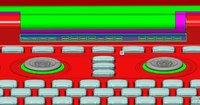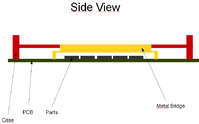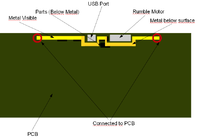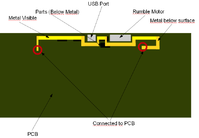hns
Well-Known Member
For "as big as possible" there isn't much room anyways. And, the design is not yet in a stage where we can really estimate that (without running a 3D thermal simulation model like this: http://www.solidworks.com/sw/products/simulation/thermal-management.htm or https://www.youtube.com/watch?v=gXMQCDV8_Ew ) One problem is that we don't even know all parameters (dimensions, thermal conductivity, heat production) to feed into such a simulation model because some parts of the design are not yet stabilized. And we also have no access to Solid Works...Better make the heatsink as big as possible now.
If anyone knows and is experienced to use a free&open tool (FreeCAD plugin?) for such thermal simulations we could give it a try.









